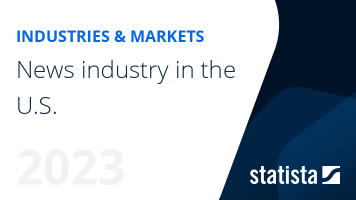
Do consumers pay for news?
It has long been commonplace to sign up for online entertainment subscriptions, and in the United States, more than 80 percent of surveyed consumers subscribed to multiple SVOD services in 2021. However, according to a global study, close to 70 percent of U.S. news consumers said that they never used a print or digital news subscription. The same applied to the majority of respondents in 20 out of the 27 countries in the report – only in Malaysia were more consumers using a subscription daily than not at all.The same study discovered that most news audiences only access news exclusively available for free. This was consistent across consumers in all surveyed countries. Indeed, given the widespread availability of free news, why should consumers invest in a subscription?
The pros and cons of news subscriptions
Online newspapers and digital-born news outlets are, understandably, increasingly attempting to convert their free users into paid members. However, as we have seen, encouraging consumers to move to paid news subscriptions is challenging in a climate where accessing news for free is the norm and news avoidance is increasing. One reason to invest in an online news subscription is to ensure access to reliable news content from a verified and trustworthy source, which has the added benefit of supporting quality journalism. However, trust in journalists is low, and consumer confidence in the news media in general remains unsteady.Another factor is the concept of paying for news in the first place. Those who advocate for open journalism argue that the public has a right to freely available information and question the ethics of restricting citizens’ access to it – particularly when it comes to topics directly affecting society, like elections or public health. Furthermore, for consumers on a lower income, the idea of a news subscription is likely low on their list of priorities when faced with other essential costs, especially in the face of a recession. Publishers must consider their methods when asking consumers to pay – for example, implementing optional paywalls rather than a full subscription model and ensuring that the most vital information can be accessed for free.
































































